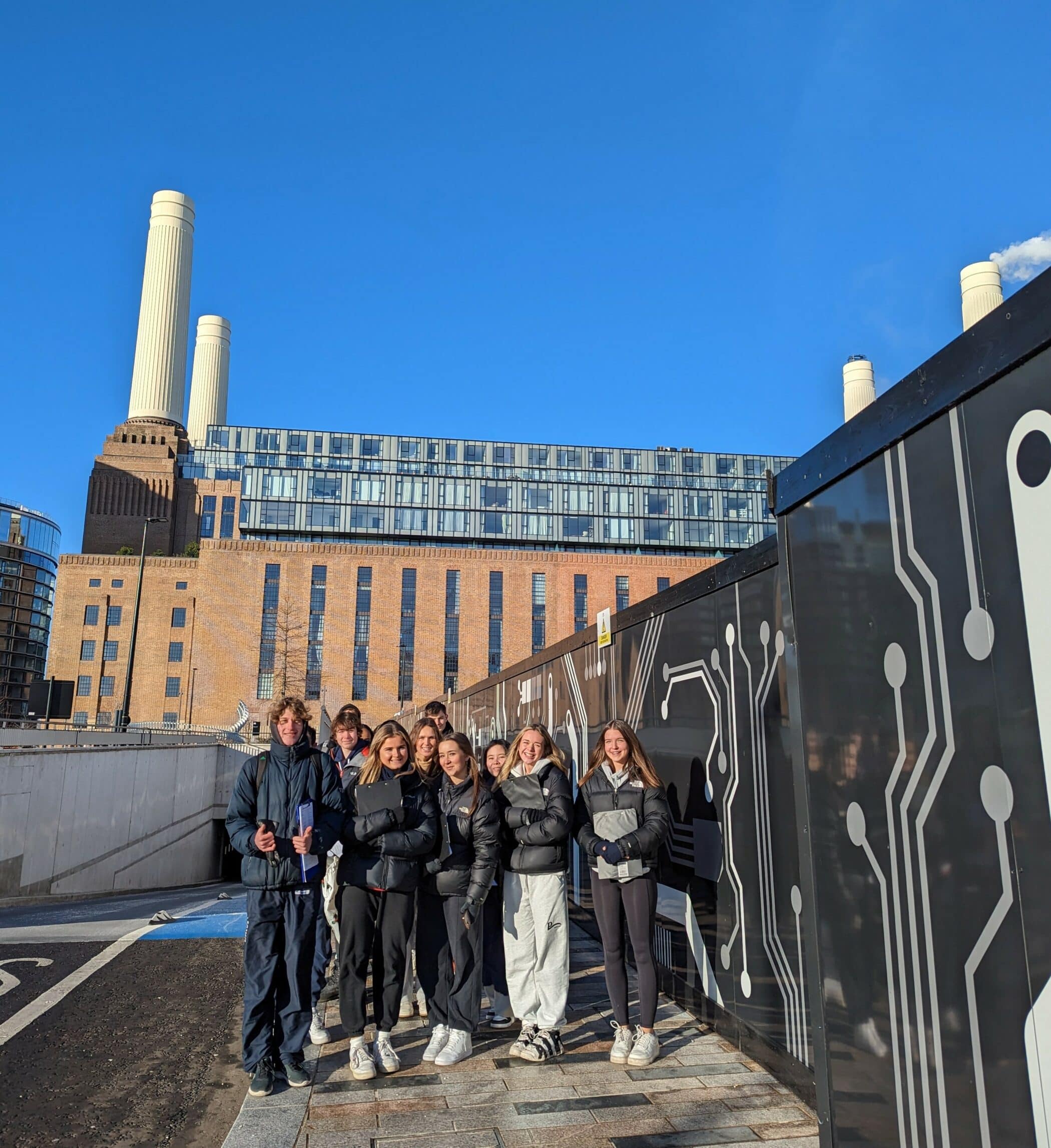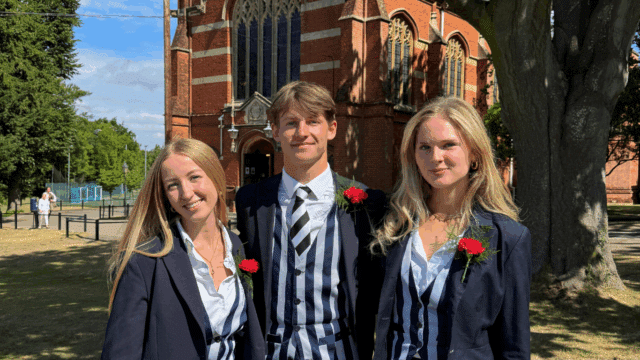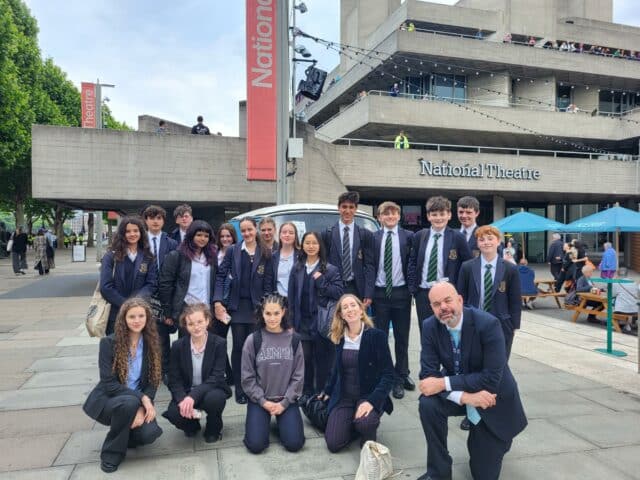On a sunny winter morning, A-level Geography students set off on a field trip to Battersea Power Station, one of London’s most iconic landmarks. The purpose of the trip was to observe the recent ‘placemaking’ of the power station and its surrounding area and to understand the various physical and human processes involved in urban regeneration.
The students learned about the history of the power station through the displays and the Power of Placemaking exhibition. They were amazed to know that the power station was originally built in the 1930s and operated until 1983 and that it was the largest brick building in Europe at the time of its construction. They also learned about the various challenges that have been faced in the regeneration process, such as the contamination of the site and the need to preserve the power station’s heritage.
Next, the group took a walk around Nine Elms to see the various regeneration projects in the neighbourhood as part of the government’s ‘Opportunity Area’. They were able to see the new residential and commercial developments that are being built around the power station and observe how the area is changing. They also had the opportunity to see the power station from different viewpoints and to appreciate its scale and architectural features.
The students talked with the local residents and business owners to get their perspectives on the regeneration and learned about the impact of the regeneration on the local community, including the benefits and challenges it has brought, as well as the changes to the area.
The field trip was a valuable learning experience for the A-level Geographers. It was an excellent opportunity for them to see how their studies apply to real-world situations and to understand how geography can shape the future of our cities. The students returned to school with a deeper understanding of the complexities of urban regeneration and the importance of preserving heritage.





